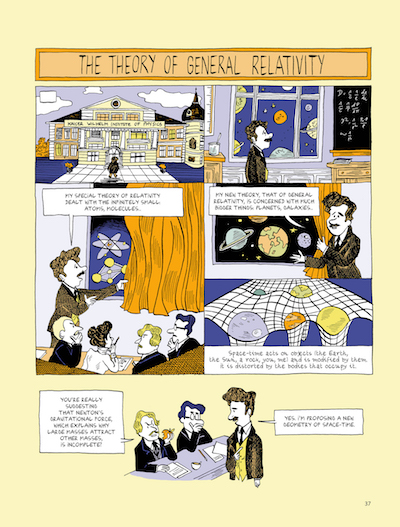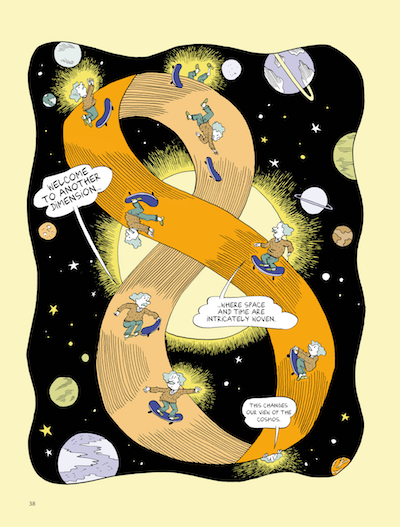When Sarah MacLean writes a historical romance, you can bet she does her research. This best-selling author holds a history degree from Harvard, and she just so happens to love stories that involve a good amount of smooching, and she’s not about to apologize for it.
MacLean continues her Rules of Scoundrels series with No Good Duke Goes Unpunished. It's dark, gritty and full of conflicts that are heightened by the pre-Victorian setting, but the emotional depth will have you struggling to put it down.
It has been 12 years since Temple, the “Killer Duke,” received his infamous title after a night with Mara Lowe—his father’s young bride-to-be—went horribly awry. After waking to a blood-soaked bed with Mara nowhere to be found, he was cast out from his home and polite society. Since then, he’s made his way in London as a boxer at the Fallen Angel, a seedy club where the London elite can exercise their debauchery out of the public eye. Yet, just as Temple has resigned himself to his misfortune, Mara resurfaces and offers the one thing he wants most—redemption and absolution.
In an impressive feat, MacLean builds a captivating romantic tension between these two characters despite the anger, conflict and mistrust between them. Both Temple and Mara are quite complex, and their relationship is not a typical or easy one, but the emotional revelations and forgiveness they find through their love makes this a stand-out read.
Maclean answered some of our questions about bad boys, Romance snobs, old-school gambling and her ideal date night.
All three of your Rules of Scoundrels books are set in Pre-Victorian London. What is it about this particular era that inspires you?
I’ve been a romance reader forever . . . and historicals were my first love as a reader, so it seemed natural that when I wrote my first book, it would be historical. I love the breathlessness of them—the way that every glance, every touch, every movement can mean something. In this particular series, I’m also exploring the darker side of London in the early 1800s, which makes everything slightly edgier and even more fun.
"Romance is, at its core, a heroine’s journey. She’s the hero of the story, and, at the end, she wins."
Like your other female characters, Mara Lowe is empowered and strong, even during her most intimate scenes. Why is this important to you?
Romance is, at its core, a heroine’s journey. She’s the hero of the story, and, at the end, she wins. Her journey is one of becoming empowered, of gaining strength through love and partnership. Not all of my heroines start the book this way—in fact, none of them do. Mara puts on a good face, but it takes her much of the book to believe in her own power and strength. I think that’s true of so many of us. Writing heroines who have to travel this path feels authentic to me . . . which is why I’m so drawn to it as a story.
Temple, the Killer Duke, is a famous fighter at the Fallen Angel, a gambling club that features prominently in this series. What drew you to focus on gaming hells, a little-known aspect of Regency life?
I knew I wanted to move away from ballrooms and into something a little more masculine and dark with this series. I was drawn to casinos because they give off this vibe that if you just barely scratch the surface, you’ll find something desperate and nefarious down there. The juxtaposition of winning more than you could ever dream vs. losing everything was a big plus for me. I like the way it works for love, too.
During my research on early casinos, I discovered a man named William Crockford—the grandfather of the modern casino. By all accounts, there was nothing sexy about William Crockford—he was ham-fisted, pasty-faced, foul-mouthed and fouler-smelling, with a penchant for prostitutes, but he was cunning and wealthy and more than enough for me to be down the imaginary rabbit hole. Crockford’s Casino became the Fallen Angel, and Crockford himself morphed into four fallen aristocrats—Bourne, Cross, Temple and Chase—each exiled from society either by chance or by choice. Scoundrels, yes, but clean, handsome, charming (when they want to be), and in need of love.
What do you love most about your bad boy characters?
The way they fall in love: hard and intense and grumbling all the way. But once they’re there, desperate for that one woman who can change everything . . . they’re not bad boys at all. They’re tremendously heroic and perfect for their heroine.
There’s a huge secret about one of your characters that is revealed in this novel. Has it been hard to keep the secret?
Yes! I’ve known it for two years and had to do a fair share of dancing around the truth to keep it quiet. I confess, I’m happy that it’s finally out—and that I can share it with readers. I hope it was worth it!
You are an outspoken champion of the Romance genre. What do you think is the most misunderstood aspect of the genre?
I think romance is maligned in large part because at first glance, love seems so pedestrian. It’s all around us. It’s in books and songs and movies and on billboards, so how could it really hold literary value? But what people tend to forget is that the search for love—for the simple idea that there is someone out there who will see us for who we are and accept us isn’t trite. It’s a huge part of our lives. And it’s an enormous part of our dreams.
There are so many fabulous romances out there—there’s something for everyone. I really believe that. And I believe that most of the people who look down their noses at the genre haven’t ever read a romance novel. I think that if they did, they’d be really surprised by how good great romance can be.
What are your top “gateway” books for Romance newbies?
I always start everyone with Susan Elizabeth Phillips, who is hysterically funny and deeply emotional. My favorite of hers is Nobody’s Baby But Mine, which is the story of a socially inept but brilliant scientist heroine with a clicking biological clock, who is terrified of having a baby as smart as she is . . . so she goes looking for an unintelligent man who might make a decent sperm donor. She ends up “stealing” a baby from the quarterback of the local NFL team . . . and thereby hangs a tale.
If you’re watching and/or reading Game of Thrones or just into fantasy, you should absolutely try Thea Harrison’s Dragon Bound, set in an alternate universe of New York City where magic exists. The hero is the wealthiest man in New York, who happens to be a Dragon shape-shifter, and keeps his hoarde of wealth locked up in the basement of his skyscraper. The heroine has never met a lock she can’t pick. She gets herself into trouble and ends up having to steal something from him . . . so she takes one penny, and leaves a replacement and a note saying, “I’m sorry.” The story begins there.
And I have to recommend a historical, too! Loretta Chase’s Lord of Scoundrels is consistently listed as the best romance novel ever written, and it is. The hero is dark and truly alpha—a Marquess who doesn’t believe in love. The heroine is a spitfire who is his match in every way. They fall for each other with fireworks that are undeniable . . . but end up butting heads in a magnificent display of chemistry that burns you up.
What’s an ideal date night for you?
I know it sounds cheesy, but honestly? I’m still pretty crazy about my husband . . . add in a great dinner and a long conversation with lots of laughs, and I’m happy.
This novel ends at Christmastime. Which of your characters would you most want to kiss under the mistletoe, and why?
I’m still pretty hooked on Temple, the hero of No Good Duke Goes Unpunished. He’s the gentlest of all my heroes, even though he’s made his name as the winningest bare-knuckle boxer in London. A true alpha male with a gooey, nougatty center.
What’s your number-one song to smooch to?
I’m a firm believer that the smooching makes the song . . . not the other way around.
What’s next?
Chase’s book! The last in the Rules of Scoundrels series and the one that I’ve been waiting to write for nearly three years. Readers of the series will find Chase’s biggest secret revealed at the end of Temple’s book, and they’ll get the rest of the story in late 2014!





















